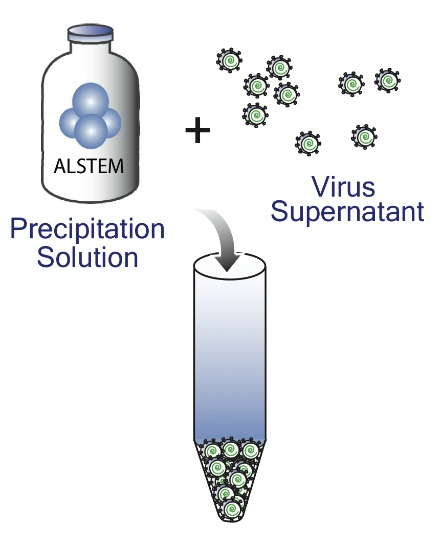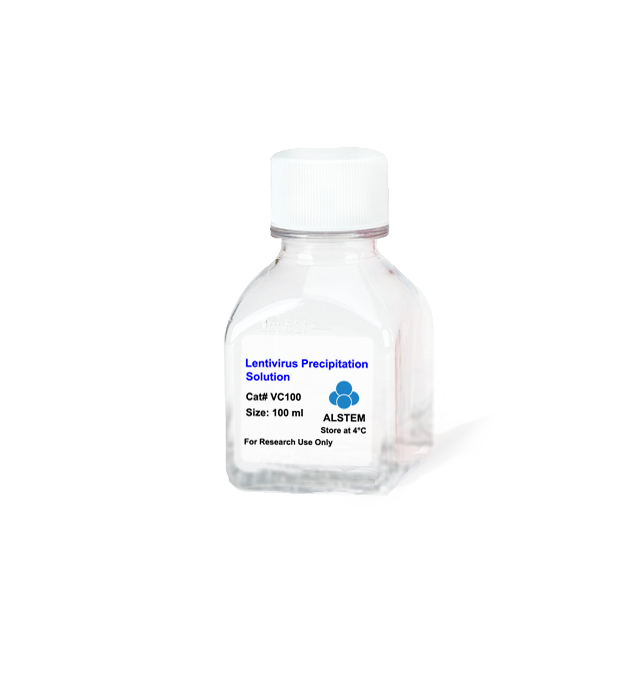Lentivirus Precipitation Reagent
Référence VC125
Conditionnement : 250mL
Marque : Alstem
Lentivirus Precipitation Solution
Highlights:
- Easy-to-use: simply mix
- No ultracentrifugation required
- Easily scale up for large volumes
- Up to 100 fold concentration increase
- Cost effective spin protocol for efficient viral concentration
- Non-toxic: safe for all cell lines, including ES cells
Description:
Lentivirus Precipitation Solution is a mixture of polymers optimized for the precipitation of lentiviral particles. It provides a simple, fast and highly efficient method for concentrating lentiviral particles. The protocol involve mixing your lentiviral supernatant with the Lentivirus Precipitation Solution, incubate for a short period, and spin the mixture in a standard centrifuge. You'll increase your lentivirus titer by up to 100 fold as quick as in 4 hrs, and obtain excellent recoveries without ultracentrifugation. The Lentivirus Precipitation Solution is a 5x solution.

Specifications:
| Product Name | Lentivirus Precipitation Solution |
|---|---|
| Shipping Condition | Room Temperature - 2 Day Shipping |
| Storage and Stability | Store at 4 °C. This product is stable for 6 months when stored as directed. |
| Quality Control | Each lot of Lentivirus Precipitation Solution is tested for sterility and successful precipitation of Lentiviral particles. |
| Restricted Use | For Research Use Only. Not for use in diagnostic or therapeutic procedures. |
J.Y. Lee et al., YAP-independent mechanotransduction drives breast cancer progression. Nat Commun 10, (2019).
- E. Mailer et al., The autophagy protein ATG9A promotes HIV-1 infectivity. Retrovirology 16 (2019).
- V. Achuthan et al., Capsid-CPSF6 Interaction Licenses Nuclear HIV-1 Trafficking to Sites of Viral DNA Integration. Cell Host Microbe 24, (2018).
- B. Adamson et al., Approaches to maximize sgRNA-barcode coupling in Perturb-seq screens. bioRxiv (2018).
- R. Hsieh et al., CDK19 is a Regulator of Triple-Negative Breast Cancer Growth. bioRxiv (2018).
- E. Shifrut et al., Genome-wide CRISPR Screens in Primary Human T Cells Reveal Key Regulators of Immune Function. Cell 175, (2018).
- P. Younan et al., Role of Transmembrane Protein 16F in the Incorporation of Phosphatidylserine Into Budding Ebola Virus Virions. J Infect Dis 218, (2018).
- M. Puray-Chavez et al., Multiplex single-cell visualization of nucleic acids and protein during HIV infection. Nat Commun 8, (2017).





